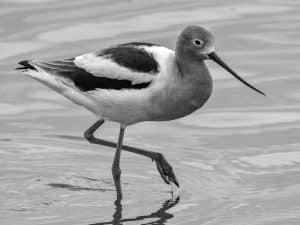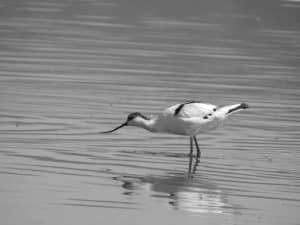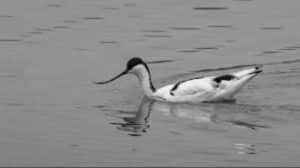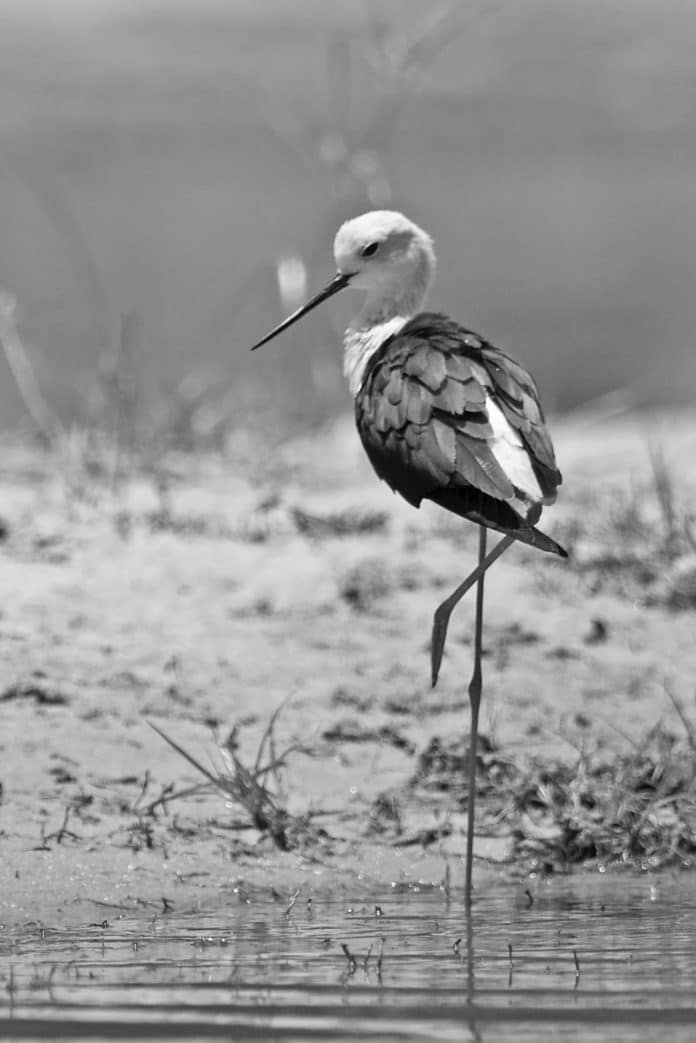Introduction to stilts and avocets in Tanzania
Tanzania, known for its breathtaking wildlife and diverse landscapes, is also home to a variety of beautiful birds. Among these are the elegant stilts and avocets in Tanzania, which can be found gracing the waterscapes of this East African nation. Stilts and avocets are known for their long, slender legs and graceful movements, making them a sight to behold. In this article, we will explore the habitat, distribution, physical characteristics, behavior, and unique adaptations of stilts and avocets in Tanzania.
Habitat and distribution of stilts and avocets in Tanzania

Stilts and avocets are primarily found in wetland habitats, including lakes, rivers, marshes, and coastal areas. These birds are highly adaptable and can be seen in both freshwater and saline environments. In Tanzania, they can be spotted in various regions, including the Serengeti, Lake Manyara, and Selous Game Reserve. The abundance of water sources and diverse ecosystems in these areas provide the perfect conditions for stilts and avocets to thrive.
Physical characteristics and behavior of stilts and avocets
Stilts and avocets are easily recognized by their long, thin legs and upward-curving bills. The black-winged stilt, a common species in Tanzania, has striking black and white plumage, with long red legs that seem to go on forever. On the other hand, the pied avocet is known for its black and white plumage, distinctive upturned bill, and long, bluish-gray legs. These birds are not only visually striking but also exhibit fascinating behavior. They are skilled waders, using their long legs to navigate shallow waters and search for prey. Stilts and avocets feed on small invertebrates, such as insects, crustaceans, and mollusks, which they pluck from the water’s surface or probe from the mud with their bills.
Unique adaptations of stilts and avocets for their waterscape environment
Stilts and avocets have several unique adaptations that allow them to thrive in their waterscape environment. Their long legs are not only visually striking but also serve a functional purpose. The length of their legs enables them to wade in deep waters without getting wet, giving them an advantage when it comes to foraging for food. Additionally, their long bills are perfectly suited for capturing prey from both water and mud. The upward curvature of their bills helps them sift through the bottom sediment to find hidden prey. This specialized feeding technique allows stilts and avocets to access food sources that other birds may struggle to reach.
Breeding and nesting habits of stilts and avocets

Stilts and avocets are monogamous birds and form pair bonds that can last for multiple breeding seasons. During the breeding season, which typically occurs between the months of March and July, these birds engage in elaborate courtship displays. The male stilt or avocet will perform various aerial displays and calls to attract a mate. Once a pair has formed, they will build a nest on the ground near the water’s edge. The nests are shallow depressions lined with vegetation. Both the male and female take turns incubating the eggs, which typically hatch after a period of around three weeks. The chicks are precocial, meaning they are able to leave the nest and feed themselves shortly after hatching.
Threats and conservation efforts for stilts and avocets in Tanzania
Despite their beauty and importance in the ecosystem, stilts and avocets face various threats in Tanzania. Habitat loss and degradation due to human activities, such as agriculture and infrastructure development, pose a significant risk to these birds. Pollution, including water pollution and pesticide use, also threatens their survival. Additionally, climate change and the associated changes in water levels and weather patterns may impact their breeding and feeding grounds. To address these threats, conservation efforts are underway in Tanzania. These include the establishment of protected areas, habitat restoration projects, and raising awareness about the importance of wetland conservation. It is crucial to continue these efforts to ensure the long-term survival of stilts and avocets in Tanzania.
Best places to spot stilts and avocets in Tanzania
If you’re a bird enthusiast or simply appreciate the beauty of nature, Tanzania offers excellent opportunities to spot stilts and avocets in their natural habitat. Some of the best places to observe these graceful waders include Lake Manyara, where large flocks can be seen during the wet season. The Serengeti, with its vast grasslands and water sources, is another prime location to encounter these birds. The Selous Game Reserve, known for its diverse wildlife, also provides ample opportunities to spot stilts and avocets. Keep in mind that birdwatching requires patience and a keen eye, so be prepared to spend some time observing these birds in their natural environment.
Photography tips for capturing stilts and avocets in their natural habitat

Photographing stilts and avocets can be a rewarding experience, allowing you to capture their elegance and uniqueness. To increase your chances of getting great shots, consider the following tips. Firstly, use a telephoto lens to bring the birds closer while maintaining a safe distance. This will help you capture their intricate details without causing any disturbance. Secondly, pay attention to the lighting conditions. Early morning and late afternoon provide soft, golden light that can enhance the colors and textures of the birds. Lastly, be patient and observant. Watch their behavior and anticipate their movements to capture interesting moments, such as feeding or courtship displays. Remember, respect for the birds and their environment should always be a priority.
Other bird species commonly found alongside stilts and avocets in Tanzania
While stilts and avocets are a sight to behold, they are not the only birds that inhabit the waterscapes of Tanzania. These graceful waders are often accompanied by other fascinating bird species. Some of the common companions include African spoonbills, flamingos, herons, and egrets. These birds create a harmonious ecosystem, each playing a unique role in maintaining the balance of the wetland habitats. Observing the interactions between different bird species can provide valuable insights into the intricate web of life that exists in Tanzania’s waterscapes.
Conclusion: The beauty and importance of stilts and avocets in Tanzania’s waterscapes
Stilts and avocets are not just beautiful birds; they are also an integral part of Tanzania’s waterscapes. Their elegant movements and unique adaptations make them a captivating sight for birdwatchers and nature enthusiasts alike. However, these birds face threats due to human activities and environmental changes. It is crucial to prioritize their conservation through habitat protection, awareness campaigns, and sustainable practices. By appreciating and protecting stilts and avocets, we can ensure that future generations can continue to witness the grace and importance of these waders in Tanzania’s diverse ecosystems.

































